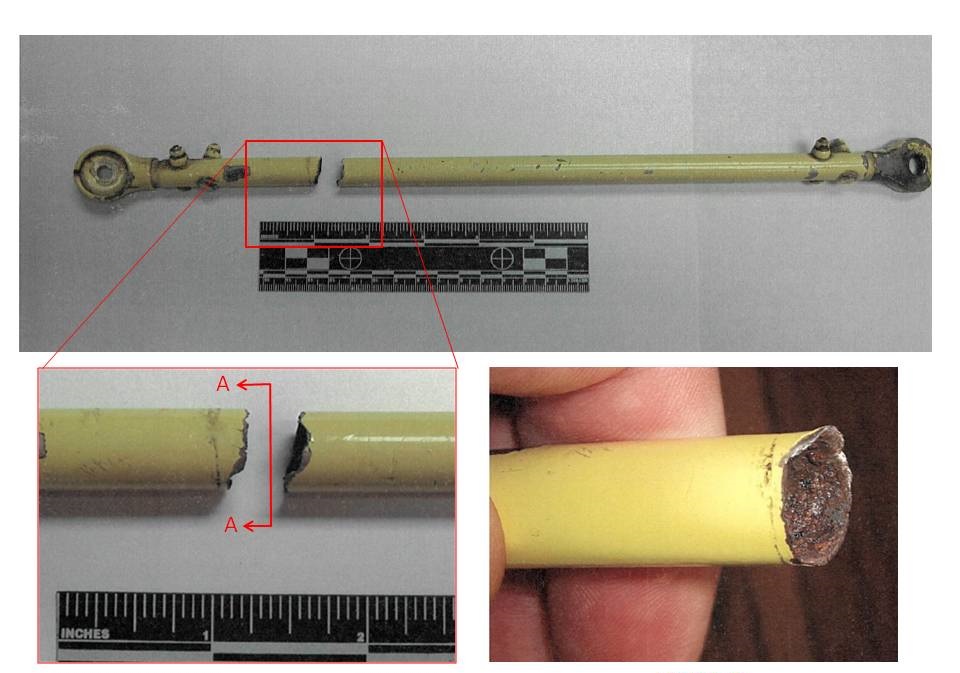Attention:
Owners, operators and maintainers of Bell Helicopter model 206L, 206L-1, 206L-3 and 206L-4 helicopters
| Issuing Office: | Continuing Airworthiness |
|---|---|
| File Classification No. : | Z 5000-35 |
| RDIMS No. : | 11939120 |
| Document No. : | CASA 2016-11 |
| Issue No. : | 01 |
| Effective Date: | 2016-11-03 |
Purpose:
The purpose of this Civil Aviation Safety Alert (CASA) is to emphasize how important it is to thoroughly examine the engine mount legs on Bell model 206L-series helicopters and replace deteriorated parts.
Background:
Operators have submitted Service Difficulty Reports noting that engine mount legs have been found corroded and/or cracked. On the 206L-series helicopters, there are six legs that hold the engine in place. In some cases the damage was not obvious because a wiring or tubing support clamp was installed on the leg, hiding the damage. In some cases, there have been reports of significant corrosion-related damage on the inside of the part where it would not be visible during inspection.
Bell Helicopter Textron Canada issued Operation Safety Notice 206L-15-51 to owners and operators of model 206L-1 and 206L-3 helicopters to highlight the criticality of inspection of the engine mount legs. That document also informs operators that Bell Helicopter has introduced engine mount legs made of CRES (stainless steel), noting that these parts have improved resistance to corrosion. It concludes by clarifying what components of the legs can be replaced and noting some important considerations that apply during inspection and reassembly.
Transport Canada and another civil aviation authority have obtained information that the CRES parts have also been reported cracked and corroded, and are not immune to degradation.
Figure 1 is one example of this type of damage.
Figure 1
Bell Helicopter has concluded that failure of one engine mount leg because of corrosion or cracking is not a safety concern because there is redundancy in the design of the engine support structure. However, since corrosion can affect the interior, non-visible surfaces where it is not detectable by visual inspection, redundancy may be compromised if corrosion is affecting more than one part in the installation.
If corrosion has reduced the strength of more than one leg in an installation and one part fails, it is not assured that the remaining parts will have sufficient residual strength to support the engine under all foreseeable loading conditions. The possibility of more than one part failing is the reason that this CASA emphasizes the importance of thorough inspection and replacement of deteriorated parts to mitigate such situation.
Recommended action:
Transport Canada recommends that all operators of model 206L, 206L-1, 206L-3 and 206L-4 helicopters:
- Familiarize themselves with the content of Operation Safety Notice 206L-15-51.
- Ensure that when inspection is required per the helicopter maintenance schedule, that all surfaces of engine mount legs are thoroughly inspected. In some cases this will involve temporarily removing clamps that are used to attach tubes, hoses or wiring.
- Replace or repair parts in accordance with maintenance manual requirements for corrosion, cracks, mechanical damage (fretting), missing paint, loose/missing fasteners or any other indication that the part is degraded.
- Replace engine mount legs if there is any doubt about the serviceability of the part. Transport Canada recommends that all the other legs on the helicopter of similar age/usage be replaced when one of the legs requires replacement due to corrosion/cracking.
- In each instance where a leg is found to be unserviceable, submit a Service Difficulty Report to Transport Canada.
Contact office:
For more information concerning this issue, contact a Transport Canada Centre; or contact Ross McGowan, Continuing Airworthiness in Ottawa, by telephone at 888-663-3639, by fax at 613-996-9178 or by e-mail at CAWWEBFeedback@tc.gc.ca.
Original signed by
Rémy Knoerr
Chief
Continuing Airworthiness
THE TRANSPORT CANADA CIVIL AVIATION SAFETY ALERT (CASA) IS USED TO CONVEY IMPORTANT SAFETY INFORMATION AND CONTAINS RECOMMENDED ACTION ITEMS. THE CASA STRIVES TO ASSIST THE AVIATION INDUSTRY'S EFFORTS TO PROVIDE A SERVICE WITH THE HIGHEST POSSIBLE DEGREE OF SAFETY. THE INFORMATION CONTAINED HEREIN IS OFTEN CRITICAL AND MUST BE CONVEYED TO THE APPROPRIATE OFFICE IN A TIMELY MANNER. THE CASA MAY BE CHANGED OR AMENDED SHOULD NEW INFORMATION BECOME AVAILABLE.
